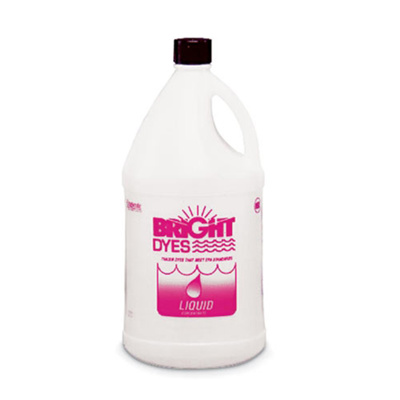Bright Dyes Flourescent FWT Red 50 Liquid Tracing Dye, 1 Pint

Description
- Certified to meet EPA standards (ANSI/NSF Standard 60)
- Recommended for flow, dilution and dispersion rate studies
- Fluorescent FWT red 50 color
Use dye products for inflow/infiltration studies, checking for illegal and cross connections, stormwater or stream flow to sanitary sewers, various studies, force main leaks and many other applications. Liquids work well for larger applications. Good contrast with the background is the rule of thumb for choosing a color. For instance, yellow-green is good for clay tile lines, while FWT red will show up better in a lagoon or pond.
Ideal for applications where metering of the dye input is required. Also useful for pipeline hydro testing. To achieve 1 ppm resolution, add 1 pint to 10,600 gallons of water. The quantity required in your specific application will be affected by conditions such as turbidity, pH, water color and sunlight.
Product Information
- Item number
- 41215
- Brand Name
- Bright Dyes
- Catalog Page
- 933
- Net weight
- 1.4
- Condition
- New
Alternate

Bright Dyes Flourescent FWT Red 50 Liquid Tracing Dye, 1 Pint
- Item number
- 41215
- Brand Name
- Bright Dyes
- Catalog Page
- 933
- Net weight
- 1.4
- Condition
- New
- Certified to meet EPA standards (ANSI/NSF Standard 60)
- Recommended for flow, dilution and dispersion rate studies
- Fluorescent FWT red 50 color
Use dye products for inflow/infiltration studies, checking for illegal and cross connections, stormwater or stream flow to sanitary sewers, various studies, force main leaks and many other applications. Liquids work well for larger applications. Good contrast with the background is the rule of thumb for choosing a color. For instance, yellow-green is good for clay tile lines, while FWT red will show up better in a lagoon or pond.
Ideal for applications where metering of the dye input is required. Also useful for pipeline hydro testing. To achieve 1 ppm resolution, add 1 pint to 10,600 gallons of water. The quantity required in your specific application will be affected by conditions such as turbidity, pH, water color and sunlight.

